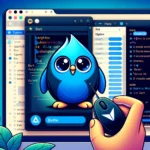Introduction
Flutter is known for its rich set of customizable widgets, which are the building blocks of any Flutter application. Understanding these essential widgets is key to creating beautiful and functional UIs. In this guide, we will explore some of the most important Flutter widgets and demonstrate how to use them effectively.
Table of Contents
- Container
- Row and Column
- Stack
- Text
- Image
- ListView
- GridView
- Scaffold
- MaterialApp
- Conclusion
Container
The Container widget is one of the most versatile and commonly used widgets in Flutter. It can be used to add padding, margins, borders, and background color to a child widget.
dartCopy codeContainer(
padding: EdgeInsets.all(16.0),
margin: EdgeInsets.all(8.0),
decoration: BoxDecoration(
color: Colors.blue,
borderRadius: BorderRadius.circular(8.0),
),
child: Text('Hello, Flutter!'),
)
Row and Column
The Row and Column widgets are used for arranging widgets horizontally and vertically, respectively. They are essential for creating layouts in Flutter.
Row
dartCopy codeRow(
mainAxisAlignment: MainAxisAlignment.spaceBetween,
children: [
Text('Item 1'),
Text('Item 2'),
Text('Item 3'),
],
)
Column
dartCopy codeColumn(
mainAxisAlignment: MainAxisAlignment.center,
children: [
Text('Item A'),
Text('Item B'),
Text('Item C'),
],
)
Stack
The Stack widget allows you to overlay multiple widgets on top of each other. This is useful for creating complex layouts where elements need to overlap.
dartCopy codeStack(
children: [
Container(color: Colors.red, width: 100, height: 100),
Positioned(
top: 10,
left: 10,
child: Container(color: Colors.blue, width: 50, height: 50),
),
],
)
Text
The Text widget is used to display text in a Flutter application. It supports various styles and customizations.
dartCopy codeText(
'Hello, Flutter!',
style: TextStyle(
fontSize: 24,
fontWeight: FontWeight.bold,
color: Colors.green,
),
)
Image
The Image widget is used to display images in a Flutter application. You can load images from various sources, including assets and the network.
Loading an Image from Assets
dartCopy codeImage.asset('assets/images/flutter_logo.png')
Loading an Image from the Network
dartCopy codeImage.network('https://flutter.dev/assets/images/shared/brand/flutter/logo/flutter-lockup.png')
ListView
The ListView widget is used to create scrollable lists of widgets. It is commonly used to display lists of data.
Simple ListView
dartCopy codeListView(
children: [
ListTile(title: Text('Item 1')),
ListTile(title: Text('Item 2')),
ListTile(title: Text('Item 3')),
],
)
ListView with Builder
dartCopy codeListView.builder(
itemCount: 10,
itemBuilder: (context, index) {
return ListTile(title: Text('Item ${index + 1}'));
},
)
GridView
The GridView widget is used to create scrollable grids of widgets. It is useful for displaying data in a grid format.
Simple GridView
dartCopy codeGridView.count(
crossAxisCount: 2,
children: [
Container(color: Colors.red, height: 100, width: 100),
Container(color: Colors.blue, height: 100, width: 100),
Container(color: Colors.green, height: 100, width: 100),
Container(color: Colors.yellow, height: 100, width: 100),
],
)
Scaffold
The Scaffold widget provides a framework for implementing the basic material design visual layout structure of the Flutter app. It includes the app bar, drawer, bottom navigation bar, floating action button, and body.
dartCopy codeScaffold(
appBar: AppBar(title: Text('My App')),
body: Center(child: Text('Hello, Flutter!')),
floatingActionButton: FloatingActionButton(
onPressed: () {},
child: Icon(Icons.add),
),
)
MaterialApp
The MaterialApp widget is the main entry point for a Flutter app that uses Material Design. It provides various properties for configuring the app, including the title, theme, and home screen.
dartCopy codeMaterialApp(
title: 'My Flutter App',
theme: ThemeData(primarySwatch: Colors.blue),
home: MyHomePage(),
)
Conclusion
Understanding and utilizing these essential Flutter widgets will help you build beautiful and functional user interfaces. Each widget serves a specific purpose and can be customized to fit your needs. Keep experimenting with these widgets to create more complex and engaging UIs in your Flutter applications. Happy coding!
